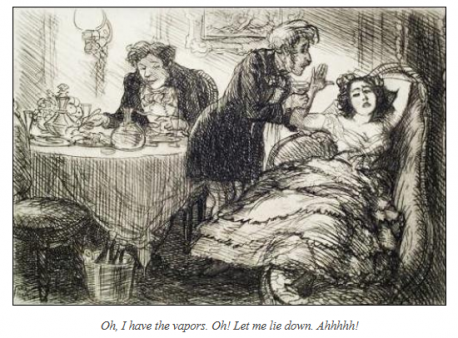Next up in our form & function foray, we present…the ‘long chair’. Known to most as the chaise longue, it’s a thing of true beauty and craftsmanship with a varied, and occasionally quirky, history…
It’s all Greek to me
Ancient Greek art depicts gods and goddesses lounging in this type of chair. In fact, the Greeks were so horizontally inclined that they eschewed the practice of sitting at a table at mealtimes in favour of reclining on couches, as early as the 8th century BC.

A touch of the vapours
Fast-forward to 19th century Britain and a new category of chaise longue has emerged…’the fainting couch’. This was an invention of the ever-so-practical Victorians, designed for use in particular by women who were feeling…a bit faint!
Whilst a chaise longue is more like an elongated armchair, a fainting couch has a sloping back to ‘faint’ into. As a piece of furniture for the wealthy, the fainting couch would have been made of expensive wood – walnut or rosewood – with a stuffed, upholstered body.
Some houses in the Victorian era would have specific fainting rooms, where these couches would be the featured furniture. One theory for the predominance of fainting couches is that women actually were fainting, because their corsets were too tight. Generally, Victorian women were viewed as weak and prone to ‘the vapours’…
Louche loungin’ modern styles
Fortunately, in the 21st century, we no longer need dedicated fainting rooms. Still, we continue to produce some seriously stylish and sleek versions of the ‘long chair’. At Omelo we’re currently swooning over this one…Phew!
